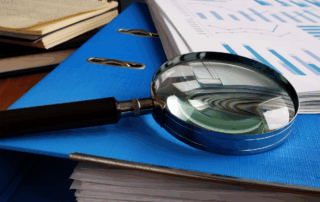Managing risks associated with school science labs is crucial to ensuring a safe learning environment for students and staff. Schools must take a proactive approach to managing risks associated with school science labs by implementing strong safety policies, proper materials management, and effective training programs. By addressing these key areas, schools can significantly reduce hazards while fostering a culture of safety in science education.
- Materials Management
Proper materials management is essential for maintaining a safe science lab environment. Schools should organize and manage their chemical inventories effectively, ensuring proper storage, handling, and disposal of materials. This helps reduce risks associated with outdated or improperly stored chemicals, preventing potential hazards such as accidental exposure or chemical reactions. Schools should also conduct regular audits to track chemical usage and expiration dates.
- Facilities Safety
Science classrooms and laboratories must meet stringent safety standards. This includes proper equipment placement, ventilation systems, and routine maintenance checks. Regular inspections and record-keeping help identify potential hazards early, while a well-defined process for addressing repairs and upgrades ensures that the lab remains a safe space for scientific exploration.
- Administrative Controls
Developing and enforcing clear safety policies is fundamental to minimizing risks. Schools should have updated chemical hygiene plans, student safety contracts, and incident reporting procedures in place. Encouraging open communication and accountability among students, teachers, and administrators ensures that safety remains a top priority at all times.
- Curriculum & Instruction
Integrating safety principles into the science curriculum is essential for long-term risk management. Students should be taught proper risk analysis techniques, including how to assess chemical hazards and prioritize safer alternatives. Educators should embed these safety-oriented decision-making skills into daily lessons rather than limiting safety discussions to specific labs or experiments.
- Professional Development
Providing teachers with ongoing safety training ensures that they are well-equipped to manage potential risks in school science labs. Training should go beyond basic compliance and focus on how to conduct experiments safely within the unique constraints of their specific classroom environment. Because each school has different lab setups and student populations, customized training programs are necessary to address individual safety needs effectively.
- Sustainable Safety Practices
Building a lasting culture of safety requires continuous effort. Teachers and administrators must share responsibility for implementing and maintaining best practices for chemical inventory management, storage, and waste disposal. Recognizing that there is no universal solution, schools should develop customized processes tailored to their specific needs. A strong commitment to safety ensures that measures remain effective and sustainable over time.
By prioritizing these key areas, schools can significantly reduce the risks associated with science labs while fostering a safe and engaging environment for students to explore the wonders of science.
For expert guidance on improving lab safety in your school, contact your INSURICA risk management advisor today.
About the Author
Share This Story
Related Blogs
Group Health Premiums on the Rise: What Employers Need to Know
In 2025, rising group health premiums are becoming a central concern for employers. Carriers like UnitedHealth, Anthem, and CVS Health have issued projections showing significant cost increases—driven by escalating claims severity, specialty drug costs, and continued labor shortages across provider networks.
SECURE 2.0 Implementation: A New Era in Retirement Planning
The SECURE 2.0 Act, passed in late 2022 and now in active rollout through 2025, is reshaping the landscape of workplace retirement planning. Designed to expand access, modernize plan design, and improve financial preparedness, the law introduces over 90 new provisions—many of which are now surfacing in HR departments across the country.
Visitor Check-In and Access Control Best Practices
Visitor check-in and access control best practices are essential for ensuring campus safety. With increasing security concerns in schools, implementing visitor check-in and access control best practices helps minimize unauthorized access, protect students and staff, and ensure a safe learning environment.








